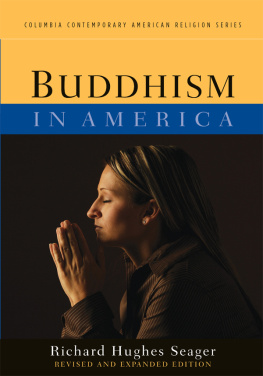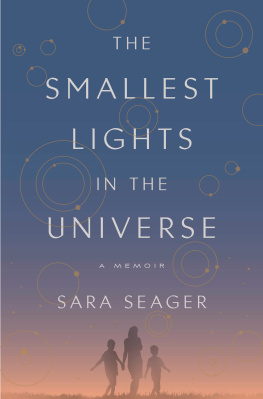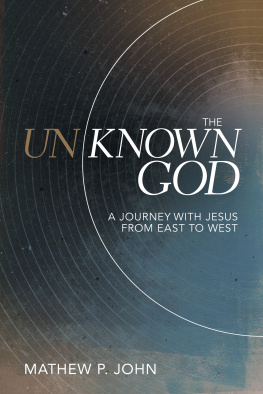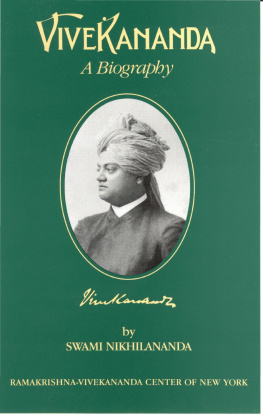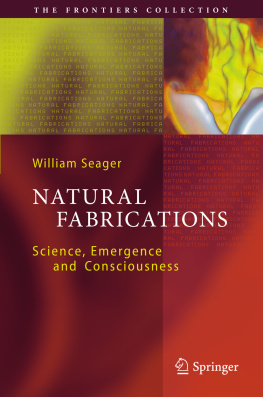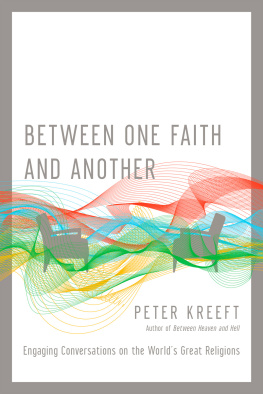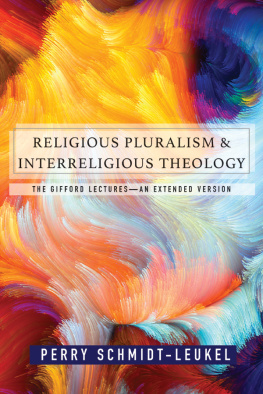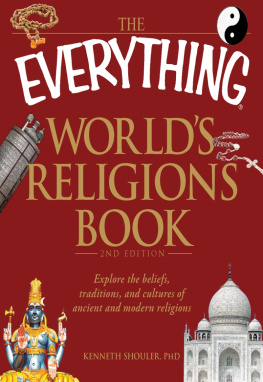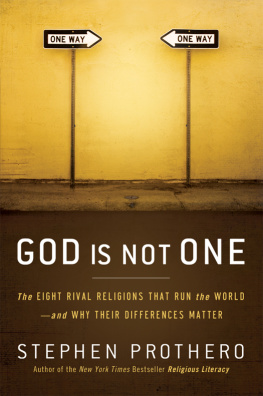Buddhism in America
The Columbia Contemporary American Religion Series
Columbia Contemporary American Religion Series
The United States is the birthplace of religious pluralism, and the spiritual landscape of contemporary America is as varied and complex as that of any country in the world. The books in this new series, written by leading scholars for students and general readers alike, fall into two categories: some of these well-crafted, thought-provoking portraits of the countrys major religious groups describe and explain particular religious practices and rituals, beliefs, and major challenges facing a given community today. Others explore current themes and topics in American religion that cut across denominational lines. The texts are supplemented with carefully selected photographs and artwork, annotated bibliographies, concise profiles of important individuals, and chronologies of major events.
___
Roman Catholicism in America
CHESTER GILLIS
Islam in America
JANE I. SMITH
Buddhism in America
RICHARD HUGHES SEAGER
Protestantism in America
RANDALL BALMER AND LAUREN F. WINNER
Judaism in America
MARC LEE RAPHAEL
The Quakers in America
THOMAS D. HAMM
New Age and Neopagan Religions in America
SARAH PIKE
Baptists in America
BILL J. LEONARD
Islam in America, Second Edition
JANE I. SMITH
BUDDHISM
in America
REVISED AND EXPANDED EDITION
Richard Hughes Seager
COLUMBIA UNIVERSITY PRESS
NEW YORK
COLUMBIA UNIVERSITY PRESS
Publishers Since 1893
New York Chichester, West Sussex
cup.columbia.edu
Copyright 2012 Columbia University Press
All rights reserved
E-ISBN 978-0-231-50437-9
Library of Congress Cataloging-in-Publication Data
Seager, Richard Hughes.
Buddhism in America / Richard Hughes Seager.Rev. and expanded ed.
p. cm.(Columbia contemporary American religion series)
Includes bibliographical references and index.
ISBN 9780231159722 (cloth : alk. paper)ISBN 9780231159739 (pbk.) ISBN 9780231504379 (electronic)
1. BuddhismUnited States. I. Title.
BQ732.S43 2012
References to Internet Web sites (URLs) were accurate the time of writing. Neither the author nor Columbia University Press is responsible for URLs that may have expired or changed since the manuscript was prepared.
A Columbia University Press E-book.
CUP would be pleased to hear about your reading experience with this e-book at .
For Ann
CONTENTS
This work is no exception to the general rule that all books are shaped by the experience, interest, and training of their authors. In a book for general readership, there is no call for extensive reflection on methodology or a lengthy examination of the contributions of earlier scholars. But brief attention to how the study of American Buddhism has developed in the last few decades helps to set in perspective the basic historical and interpretive questions that run throughout this book.
Two decades ago, as a graduate student in the study of religion, I became interested in the history of the encounter between the religious traditions of East and West, after having studied Hinduism and Buddhism for several years. To pursue this interest, I entered a new Ph.D. program at Harvard University devoted to the study of religion in the modern West, with an emphasis on American religious history. There were a number of us in the program in its first few years with an interest in eastern religions, particularly Buddhism, but we soon found that there was very little scholarship devoted to its history in America, a topic that was only then beginning to emerge as significant.
Early on, we relied on a few new interpretive works such as Robert S. Ellwoods Alternative Altars: Unconventional and Eastern Spirituality in America (1979), which focuses largely on selected developments in the counterculture, and Tetsuden Kashimas Buddhism in America (1977), which treats the history of the Jodo Shinshu tradition of old-line Japanese immigrants. More inclusive treatments of the contemporary Buddhist scene could be found in Emma Laymans Buddhism in America (1976) and Charles Prebishs American Buddhism (1979).
A great deal changed with the publication of Rick Fieldss How the Swans Came to the Lake in 1981. Swans combined well-understood developments in the East-West encounter in the nineteenth century, such as the interest of the Transcendentalists in Asian spirituality and the emergence of popular movements like Theosophy, with new research on pioneering Zen teachers in the early and mid-twentieth century. Fields linked these and other developments with the burgeoning interest in Buddhism in the 1960s counterculture to develop a plausible, and highly readable, historical narrative. I can still recall the excitement that the publication of Swans generated among the small clutch of Americanists who were interested in these matters. And I know for a fact that we repeatedly scoured it for new data and hints as to how to proceed with our own studies, even though we knew that, as a general readership book published by a commercial press, it did not quite meet the formal academic standards demanded by the American Historical Association.
Within several years, however, important shortcomings of Fieldss book became apparent. In particular, Fields developed his entire discussion to account for how a generation of cultural revolutionaries in search of alternative spirituality found their way to Buddhism. In effect, he gave countercultural Buddhists a sense of their own indigenous Buddhist lineage. But by the mid-1980s, the importance of changes in immigration law made in 1965 became clear to all observers as immigration from Asia soared and a wide range of Buddhist traditions began to take root in new immigrant communities. Despite revisions in subsequent editions, Fieldss story of American Buddhism never satisfactorily factored in the arrival of this new, complex Buddhist cohort.
At that stage of the game, intellectuals within countercultural Buddhist communities and scholars trained in Asian Buddhist history, many of them practicing Buddhists, more or less picked up the ball as commentators on American Buddhism. During the 1980s and into the 90s, they explored a range of questions first raised by Prebish: What kind of commitment does it entail to call oneself an American Buddhist? What kinds of change ought to be made to Asian Buddhist traditions to adapt them to this country? Are there two American Buddhisms, one found among European Americans and another among immigrants? During these years, a number of new books were published that focused sustained attention on selected developments primarily associated with contemporary European American Buddhism, among them Jane Hursts Nichiren Shoshu Buddhism and the Soka Gakkai in America: The Ethos of a New Religious Movement (1992) and Helen Tworkovs Zen in America (1989). At the same time, popular religious publishing on Buddhism flourished, with more than a hundred titles produced in quick succession, reflecting the growing interest of Americans in Buddhism.




